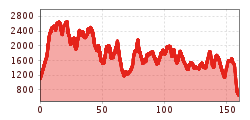Arrival by public transport
Mit dem Bus bis zur Haltestelle "Sillian Marktplatz"
A long-distance hike through history, after all, the Carnic Alta Via, also known as the Peace Trail, leads along the former front line of the First World War. From today's perspective, the border region between Austria and Italy stands out with its impressive panorama of the Dolomites. On top of this, 30 hiking peaks beckon, which we can take with us virtually "to-go".
This difficult long-distance circular tour requires alpine experience as well as surefootedness and a very good level of fitness for the sometimes very long stages. Concentration is required and a good walking technique for all types of climbing that are possible in alpine terrain: Rock, gravel, steep, sloping meadow paths.

The Carnic altitude trail follows the 110 km Carnic main ridge, west to east and covers 155 km in total. The trail (also abbreviated to KHW 403) can be tackled in 6 to 9 day stages (walking times of between 3.5 and 9 hours), ideal for groups of hikers and families. Overnight stays available in the Alpine association lodges.Can be tackled as singular day tours.
(c) 2015 Wegdaten Openstreetmap Mitwirkende
Mit dem Bus bis zur Haltestelle "Sillian Marktplatz"
Parkplatz beim Elektrogeschäft Aichner